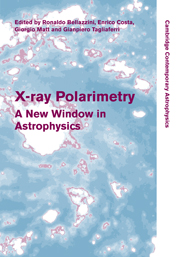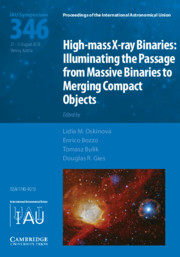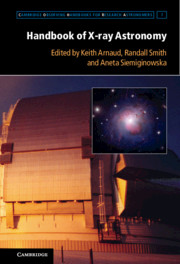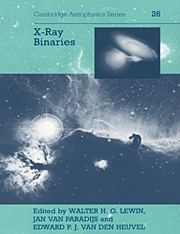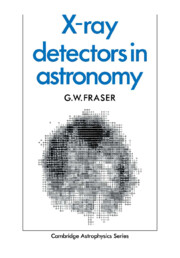X-ray Polarimetry
Due to the advent of a new generation of detectors, X-ray polarimetry promises to join X-ray imaging, spectroscopy and timing as one of the main observational techniques in high energy astrophysics. This has renewed interest in the field, and indeed several polarimetric missions have recently been proposed. This volume provides a complete and up-to-date view of the subject for researchers in astrophysics. The contributors discuss the present status and perspectives of instruments, review current theoretical models, and examine future missions. As well as detailed papers, the book contains broad reviews that can be easily understood by astrophysicists new to the field.
- The first summary of this rapidly developing subject for researchers in astrophysics
- Discusses the instruments, theoretical models, and future missions to give a comprehensive overview of the field
- Contains broad reviews that can be easily understood by astrophysicists new to the field, as well as more detailed papers
Product details
July 2010Hardback
9780521191845
384 pages
254 × 179 × 19 mm
0.9kg
240 b/w illus.
Available
Table of Contents
- 1. X-ray polarimetry: historical remarks and other considerations
- Part I. Polarimetry Techniques:
- 2. Scattering polarimetry in high energy astronomy
- 3. Photoelectric polarimeters
- 4. Bragg crystal polarimeters
- 5. X-ray polarimetry with the photon counting pixel detector timepix
- 6. HE polarized photon interactions with matter: simulations with geant4
- 7. The GPD as a polarimeter: theory and facts
- 8. Ideal gas electron multipliers (GEMs) for x-ray polarimeters
- 9. Broad-band soft x-ray polarimetry
- 10. Feasibility of x-ray photoelectric polarimeters with large field of view
- 11. Angular resolution of a photoelectric polarimeter
- 12. Development of a Thomson x-ray polarimeter
- 13. Hard x / soft gamma ray polarimetry using a Laue lens
- Part II. Polarized Emission in X-ray Sources:
- 14. Probing strong gravity effects with x-ray polarimetry
- 15. X-ray polarization from black holes in the thermal state
- 16. Strong-gravity effects acting on polarization from orbiting spots
- 17. Polarization of thermal emission from accreting black holes
- 18. X-ray polarimetry and radio-quiet AGN
- 19. The soft x-ray polarization in obscured AGN
- 20. The polarization of complex x-ray sources
- 21. Polarization of Compton x-rays from jets in AGN
- 22. Polarization of x-ray lines from galaxy clusters and elliptical galaxies
- 23. Polarization characteristics of rotation-powered pulsars
- 24. Polarized x-rays from magnetized neutron stars
- 25. Polarization properties of x-ray millisecond pulsars
- 26. X-ray polarization signatures of neutron stars
- 27. Polarization from the oscillating magnetized accretion torus
- 28. X-ray polarization from accreting white dwarfs and associated systems
- 29. Polarization of pulsar wind nebulae
- 30. X-ray polarization of gamma-ray bursts
- 31. Central engine afterglow from GRBs and the polarization signature
- 32. GRB afterglow polarimetry. Past, present and future
- 33. Gamma-ray polarimetry with SPI
- 34. INTEGRAL/IBIS observations of the Crab Nebula and GRB 041219A
- 35. Fermi results on the origin of high energy emission in pulsars
- 36. Diagnostics of the evolution of spiral galaxies in a cluster environment
- Part III. Future Missions:
- 37. Gravity and extreme magnetism SMEX (GEMS)
- 38. Programs of x-ray polarimetry in Italy
- 39. A polarimeter for IXO
- 40. Polarimetry with ASTRO-H soft gamma-ray detector
- 41. EXIST and its polarization sensitivity
- 42. PoGOLite: a balloon-borne soft gamma-ray polarimeter
- 43. Studies of neutron background rejection in the PoGOLite polarimeter
- 44. Observing polarized x-rays with PoGOLite
- 45. Pre-flight qualification tests of the PoGOLite detector system
- 46. The gamma-ray polarimeter experiment (GRAPE) Balloon Payload
- 47. POLAR: an instrument dedicated to GRB polarization measurement
- 48. Polarisation detection capability of GRIPS
- 49. X-ray and y-ray polarimetry small satellite mission polaris
- 50. GAP aboard the solar powered sail mission
- 51. Hard x-ray polarimeter for small satellite missions
- 52. Performance of hard x-ray polarimeter: PHENEX
- 53. GRB polarimetry with POET
- Index.

